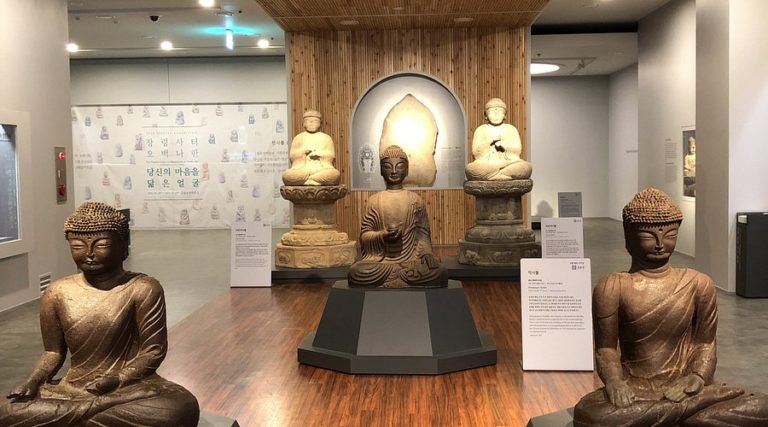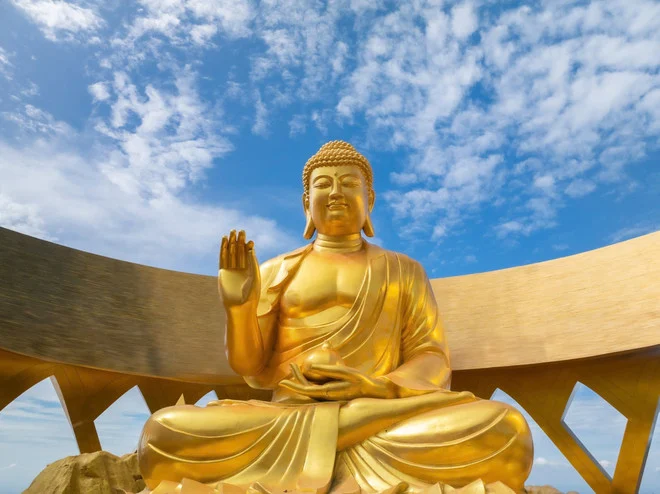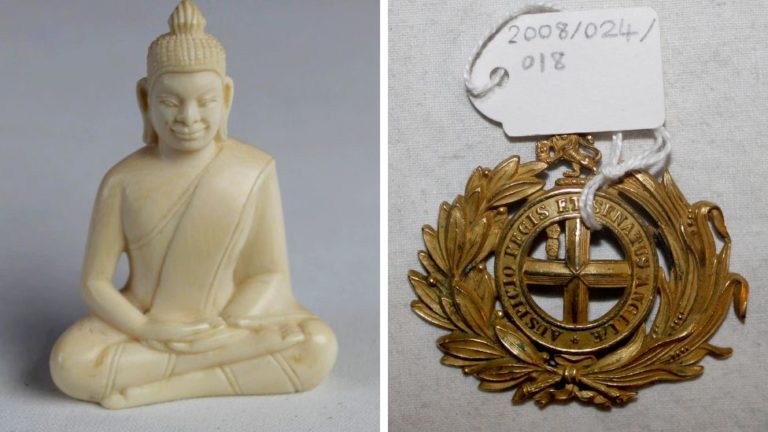At nearly 2,000 years old, the oldest dated image of the Buddha is currently on display in the British Museum as part of its summer exhibition looking at the cultures and religions of ancient India.

The small gold cylindrical reliquary was excavated in 1834. Inside the protective jar were coins dating to the reign of a governor who ruled between AD70 and 100, which allowed the gold item to be dated to at least that age, if not even older.
It forms a small and easily missed object in this wide-ranging exhibition that examines the three core religions – Hindu, Buddhist, and Jain – and how they spread across the subcontinent.
It’s also a beautifully designed exhibition as they’ve cleverly lit many of the objects on display, giving them an almost ethereal air, for what are for many, not just old carved stones, but living religious items.

Featuring over 180 objects, the exhibition offers a journey through the devotional art of each religion, starting with an exploration of ancient nature spirits, and moving on to the core iconography of the more famous big three.
It’s a surprise to me at least to learn that for a long time the Buddha was not shown as a human, but as an abstract concept – and the exhibition includes a rare double-sided stella with both styles on it.
The exhibition also cleverly and very helpfully includes colour coded “maps” of some of the stone carvings that make it easier to understand what is what when you look at the grey stone slab in front of you.

It’s also good that they explore how the objects were excavated by European collectors, one of whom seems, even by the standards of the time, to have been particularly inept at his work.
Towards the end of the display is a very badly rotted lump of wood – and you can just about make out that it’s a carved figure – a reminder that our impression of the art of the three religions is based on what survived, and much did not.
It’s a fascinating look at the big three religions, and a reminder that what for me are lovely old stones are also for other visitors going to have a much more profound impact.

The exhibition, Ancient India: Living traditions is at the British Museum until late October 2025.




